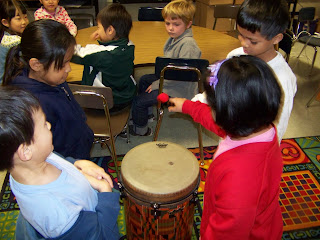
 This week the first graders got to work variety of percussion instruments from all over the world. They learned how drumheads were originally made from animal skins that drums with skins are called membranophones. The day ended with a fun sound identification game called "Who's that Tapping at My Window."
This week the first graders got to work variety of percussion instruments from all over the world. They learned how drumheads were originally made from animal skins that drums with skins are called membranophones. The day ended with a fun sound identification game called "Who's that Tapping at My Window."Homework -- complete the drum worksheet.









